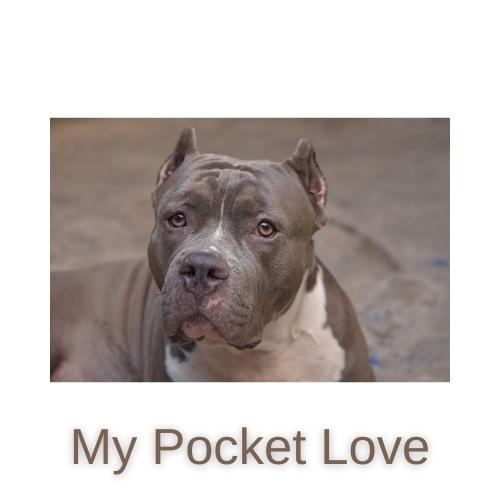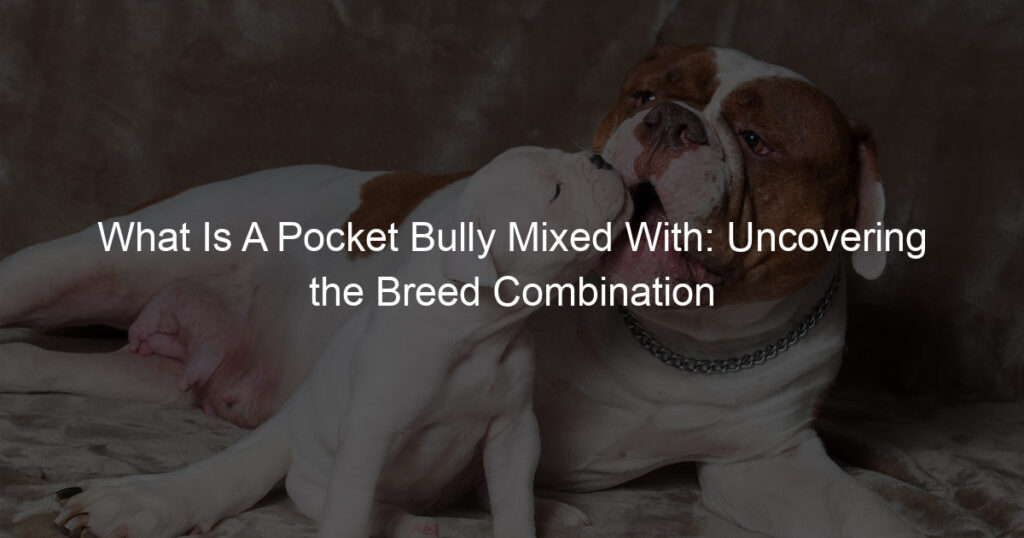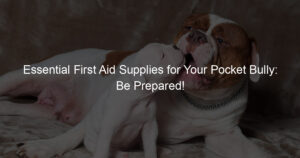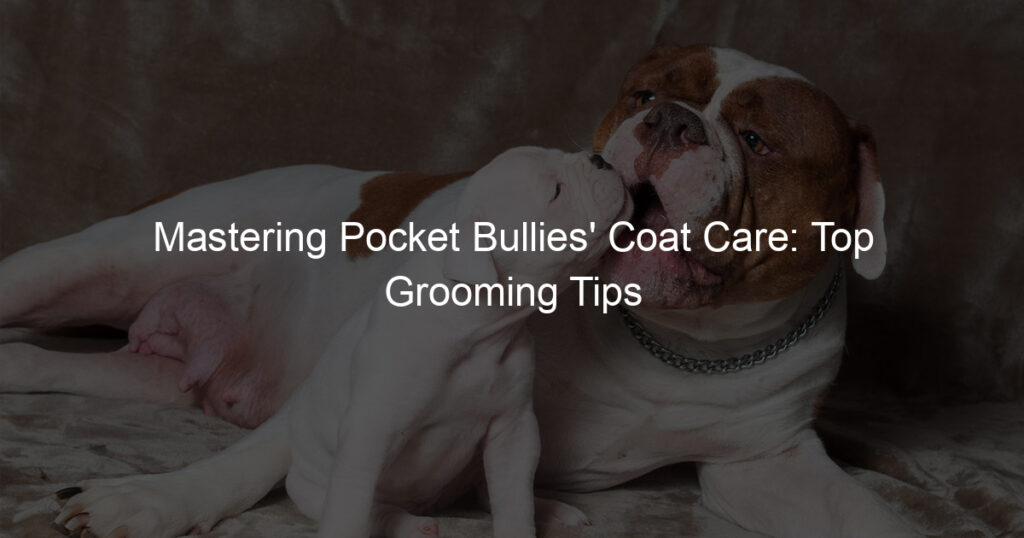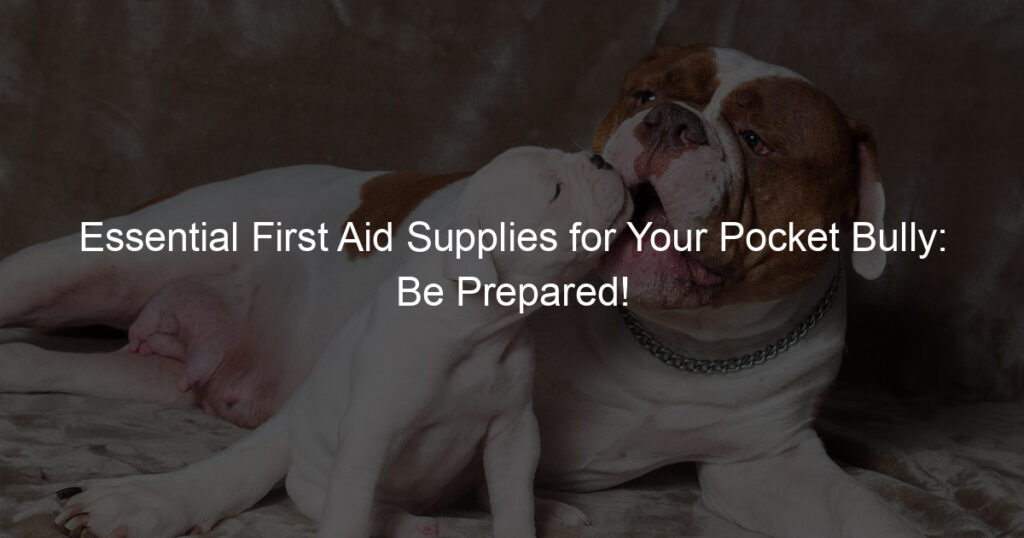A Pocket Bully, a smaller variant of the American Bully breed, has become increasingly popular among dog enthusiasts who seek an affectionate and sociable canine companion.
With their compact size and muscular build, these dogs are both charming and powerful.
However, some may wonder what is a Pocket Bully mixed with another breed and what characteristics could be expected from such a combination.
Various breeds can be mixed with the Pocket Bully, each contributing unique traits to the hybrid dog. Understanding these combinations can provide valuable insights into the physical attributes, temperament, and overall health of the resulting pups.
Acquiring this knowledge allows potential owners to select the best fit for their lifestyle and ensure they are prepared to care for their new canine companion.
Key Takeaways
- Pocket Bullies are a popular choice for dog lovers seeking smaller, muscular companions
- Mixing Pocket Bullies with other breeds can result in diverse physical and temperament traits
- Understanding these hybrid dogs helps potential owners choose the best fit for their lifestyle
What Is A Pocket Bully Mixed With
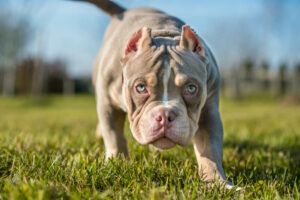
Origin and History
As a dog enthusiast, I have always been fascinated with the different breeds and their backgrounds. One breed that has caught my attention is the Pocket Bully.
This unique dog is a mixed breed that has its roots in the American Bully family. Let me share with you my insights about their origin and history, as well as their connection to the American Pit Bull Terrier and Patterned Terriers.
The Pocket Bully is a relatively new breed that surfaced in the late 20th century. It was primarily a result of breeding the American Pit Bull Terrier and the American Bully.
The American Bully, in turn, is a cross between the American Pit Bull Terrier and various other breeds such as the Staffordshire Bull Terrier, American Bulldog, and Olde English Bulldogge.
This mixing led to the creation of the four recognized American Bully sizes, which are Standard, Pocket, XL, and Classic.
The main goal of the breeders was to produce a smaller-sized American Bully that retained its more muscular and compact body, along with the positive traits of temperament and appearance.
That’s how the Pocket Bully came into existence. Its name is derived from its smaller stature compared to the other American Bully sizes.
I should also mention that the American Pit Bull Terrier has a long history that dates back to the early 19th century. This breed was originally developed for blood sports such as bull-baiting and dog-fighting.
Yet, on the bright side, it’s important to know that the American Bully, including the Pocket Bully, was bred specifically to avoid inheriting the aggressive traits of its ancestors.
In the quest for developing the Pocket Bully, breeders were inspired by Patterned Terriers, which are known for their distinct coat patterns and colors.
This influence led to the development of a wide range of coat patterns and colors found in the Pocket Bully breed today.
Physical Attributes and Characteristics
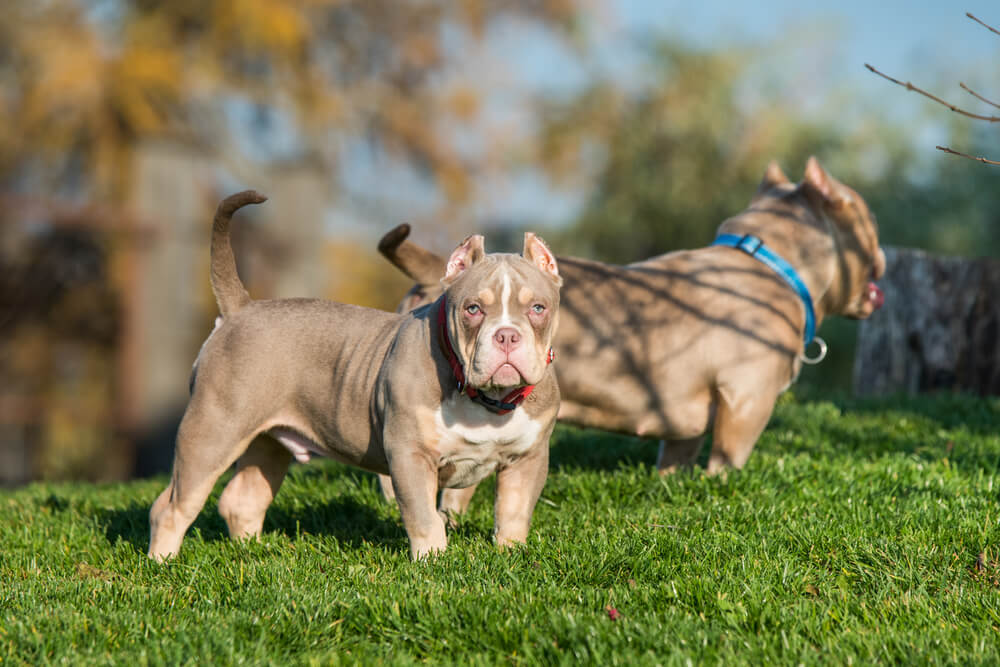
Size and Weight
As a Pocket Bully mix enthusiast, I can attest that these dogs are known for their small size and stocky, muscular frames. The name “Pocket Bully” indeed comes from their small stature, which typically results in them standing between 12 to 16 inches at the shoulders.
Despite their modest height, these dogs pack a lot of muscles and can weigh between 30 to 50 pounds, with males generally being on the heavier side.
Coat and Color
I’ve always admired the Pocket Bully mix’s interesting coat colors and patterns. They come in an array of vibrant colors, such as black, red, fawn, blue, and even merle.
In some cases, they may also have liver coats. White markings often accentuate their lively coat colors, giving them an appealing and distinctive appearance.
When it comes to their coats, the Pocket Bully mix has short fur that lies close to the skin. This makes them relatively low maintenance, although regular brushing is still recommended to keep their coats looking healthy and shiny.
Their short legs and stocky build, combined with their varied coat colors, make the Pocket Bully mix a unique and eye-catching breed to own. I’m always amazed at how their physical attributes showcase their incredible beauty and strength.
Recognizing the Hybrid Mixed Breeds
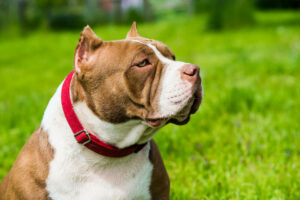
When it comes to hybrid dogs, there are two main categories: designer breeds and crossbreeds.
Understanding the difference between these types of hybrids is essential because pocket bullies may fall into one of these categories depending on their parent breeds.
Designer Breeds
In my experience with designer breeds, they are the result of intentionally breeding two purebred dogs of different breeds to create a new breed with specific characteristics.
For instance, pocket bullies may be a designer breed if they are bred from an American Bulldog and a French Bulldog. This combination is intended to create a dog with the muscular physique of an American Bulldog and the compact size of a French Bulldog.
Some of the common dog breeds used to create designer pocket bully hybrids include:
- American Bulldog
- English Bulldog
- French Bulldog
- Olde English Bulldogge
- Boston Terrier
Crossbreeds
On the other hand, crossbreeds are accidental or unplanned mixtures of two or more dog breeds. Unlike designer breeds, crossbreeds are not created for specific traits but may inherit the characteristics of their parent breeds.
A pocket bully may also fall into this category if it’s a mix between, for example, a Labrador and an American Bulldog.
Some examples of the breeds that might be crossbred to produce pocket bullies include:
- Labrador
- American Bulldog
- English Bulldog
- French Bulldog
- Olde English Bulldogge
In conclusion, recognizing pocket bully mixed breeds involves understanding the difference between designer breeds and crossbreeds and identifying the traits that are inherited from the parent breeds.
By doing so, I can better appreciate the variations and unique qualities found in hybrid dogs like pocket bullies.
Temperament and Behavior

I find that a Pocket Bully mixed breed exhibits a loyal and friendly temperament. They are known to be affectionate towards their family members, building strong bonds with their owners.
Socialization plays a crucial role in their overall behavior, and it is vital to expose them to various environments and people at an early age.
In my experience, these dogs are energetic and active, requiring regular physical exercise to maintain their health and well-being. I’ve noticed they enjoy various activities, such as long walks, hikes, and interactive playtime.
Their intelligent nature makes them easily trainable, and they can quickly pick up on new commands and tricks.
Ensuring that a Pocket Bully mixed breed receives proper mental stimulation is equally as important as physical exercise. Providing them with puzzle toys, obedience training, and agility work can help maintain their focus and prevent behavioral issues.
The Pocket Bully mixed breed is an affectionate, intelligent, and energetic canine companion. Their loyal and friendly nature, coupled with their high trainability, make them perfect for families who can dedicate time to socialize, exercise, and mentally stimulate them.
The Health Aspect
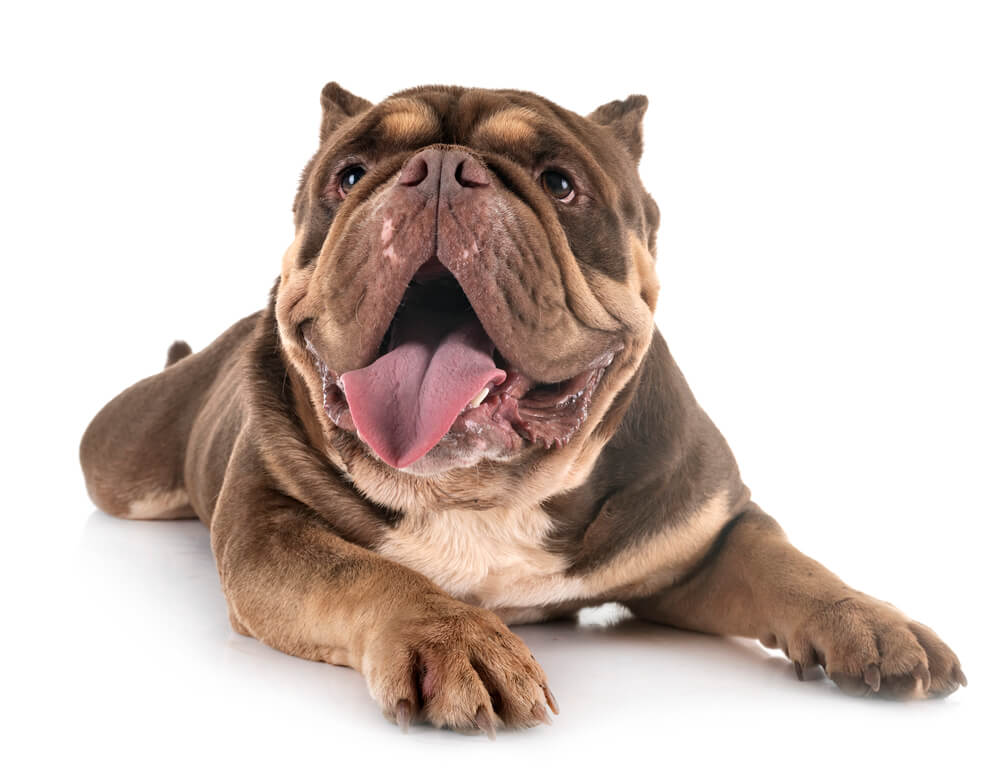
Common Health Issues
As a Pocket Bully owner, I have learned that there are several common health issues to be aware of when caring for these mixed-breed dogs. These include hip and elbow dysplasia, dermatitis, eczema, and breathing problems.
Hip dysplasia is a prevalent issue in Pocket Bullies. This genetic condition occurs when the hip joint doesn’t fit properly, leading to pain and mobility issues. It’s essential to monitor your dog for any signs of discomfort while exercising, as early intervention can help manage this health concern.
Elbow dysplasia is another joint problem seen in Pocket Bullies. Similar to hip dysplasia, it’s caused by an improperly formed elbow joint and can lead to pain and restricted movement. Regular check-ups with a veterinarian can help detect and address this issue in a timely manner.
Pocket Bullies are also prone to skin problems like dermatitis and eczema. Pay close attention to your dog’s skin for redness, itching, or irritation, and consult with a veterinarian if you notice any changes in their skin condition.
Lastly, these dogs can sometimes experience breathing problems due to their shortened snouts. It’s crucial to ensure they don’t overexert themselves during exercise, especially in hot or humid weather, to minimize the risk of breathing difficulties.
Vaccinations and Treatments
As an owner, it’s my responsibility to maintain my Pocket Bully’s health by staying up-to-date on vaccinations and regular veterinary check-ups. Vaccinations protect your dog against various illnesses like parvovirus, distemper, and rabies.
It’s essential to follow your veterinarian’s guidelines on the proper vaccination schedule for your Pocket Bully.
When it comes to treatments, addressing health issues early on is vital. For example, weight management and joint supplements can help alleviate symptoms of hip and elbow dysplasia.
For skin issues like dermatitis and eczema, topical ointments or medicated baths may be prescribed by your veterinarian.
In conclusion, keeping a close eye on your Pocket Bully’s health and ensuring they receive necessary vaccinations and treatments is crucial for their overall well-being.
Regular veterinary visits and proper exercise will help maintain a happy and healthy life for your beloved companion.
Breed Standards and Classifications
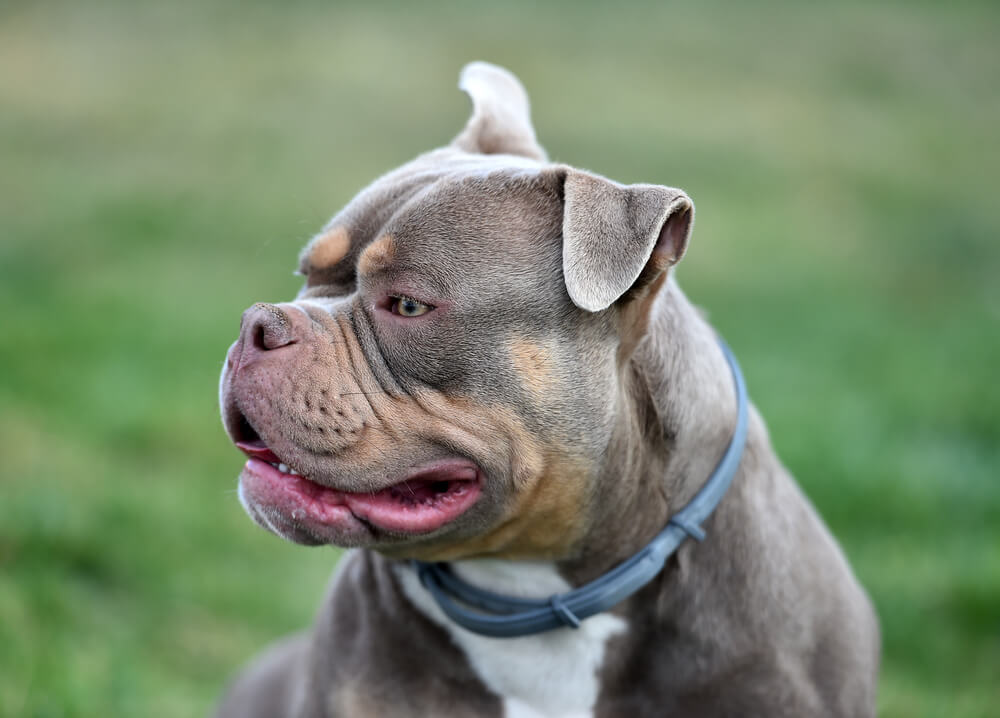
When it comes to Pocket Bully mixed breeds, understanding the breed standards and classifications set out by kennel clubs is important. In this section, I’ll discuss the Kennel Club’s Recognition of the American Bully and its various types, including the Pocket Bully.
Kennel Clubs’ Recognition
The American Bully Kennel Club (ABKC) is the primary organization responsible for the recognition and registration of the American Bully, including Pocket Bully mixes. The ABKC strives to standardize the breed and ensure reputable breeding practices.
The United Kennel Club (UKC) and American Kennel Club (AKC) do not officially recognize the American Bully as a separate breed, but they do recognize some of the parent breeds involved, such as the American Pit Bull Terrier, American Staffordshire Terrier, and Staffordshire Bull Terrier.
The American Bully is classified into several types based on size and appearance. These types include:
- Standard Bully: This is the foundation of the breed, and it closely resembles the American Pit Bull Terrier and American Staffordshire Terrier in size and build.
- Classic Bully: Slightly larger than the standard, the Classic Bully maintains the same proportions and muscle mass, but has a larger overall frame.
- Pocket Bully: This is a smaller, more compact version of the American Bully, usually standing around 17 inches tall or less. Pocket Bully mixes are a popular choice for families and those with limited space.
- XL Bully: As the name suggests, this type is significantly larger and heavier than the other varieties. XL Bullies typically possess the same characteristics as the standard, just on a larger scale.
- Extreme Bully: This type exhibits exaggerated features, such as increased muscle mass or an overly “bully” appearance. Extreme Bullies are not as widely recognized by kennel clubs, as they may not meet breed standard guidelines.
When looking for a Pocket Bully puppy, it’s important to find a reputable breeder who follows the guidelines set forth by major kennel clubs. This ensures the dog’s quality, health, and adherence to breed standards.
Breeding Techniques
I have learned that breeding a Pocket Bully involves several techniques, with selective breeding being the most common method. Selective breeding ensures that desirable traits from both parent breeds are inherited by the offspring.
As a knowledgeable person on this topic, I would like to share my insights into breeding these unique canines.
When selectively breeding a Pocket Bully, it’s essential to maintain their bloodlines. We must carefully choose the parent dogs whose characteristics we want to pass down to the next generation.
This might include aspects such as temperament, size, and color.
Another important factor in breeding Pocket Bullies is to use of purebred dogs. This practice ensures that the breed remains consistent in terms of traits and appearance.
Utilizing purebred dog bloodlines, breeders can create progenies that resemble their parent breeds and meet breed standards.
The key to breeding an outstanding Pocket Bully lies in the selective breeding of purebred bloodlines and carefully choosing the characteristics we want the offspring to inherit.
Like other dog breeds, producing Pocket Bullies requires patience, knowledge, and dedication.
Role as Companion Dogs
As a pocket bully enthusiast, I find that their mixed breed plays an important role as companion dogs. The pocket bully, a smaller version of the American Bully, inherits qualities that make them a perfect family pet.
My experience with pocket bullies has shown me that they are affectionate, social, and gentle with children.
Being a mix of different breeds like the American Pit Bull Terrier, American Staffordshire Terrier, and Bulldog, pocket bullies carry the ideal traits of companion dogs.
In my years of owning pocket bullies, I’ve noticed their loyalty and willingness to protect their families.
They are intelligent and have a moderate energy level, making them easy to train and manageable as family dogs. Although they possess a muscular and intimidating appearance, pocket bullies are known for their loving nature, which I have experienced firsthand with my own pets.
Socialization is key in ensuring a pocket bully becomes a well-rounded companion dog. I always make sure to introduce my pocket bullies to different environments, people, and animals when they’re young. This helps them grow up to be adaptable, confident dogs that can accompany me and my family anywhere.
Pocket bullies mixed with other breeds have the potential to make great companion dogs for families.
Their affectionate and protective nature, combined with their manageable size and strength, make them desirable pets for people like me who want a loyal, loving dog by their side.
Frequently Asked Questions
What breeds are commonly mixed with Pocket Bullies?
As a mixed breed, Pocket Bullies are often the result of combining various bully breeds. Some common breeds mixed with Pocket Bullies include the American Pit Bull Terrier, American Staffordshire Terrier, French Bulldog, and Boston Terrier, among others. The purpose of these mixes is often to create a compact, muscular, and friendly pet.
What are the differences between Micro and Pocket Bullies?
Micro and Pocket Bullies are two different categories within the American Bully family. Microbullies are the smallest of the two, typically standing between 10 and 13 inches tall. Pocket Bullies are slightly larger, usually reaching a height of 14 to 17 inches at the withers. Both types are characterized by their muscular build and affectionate temperament, yet differ in size.
What physical features define a Pocket Bully?
Pocket Bullies have several distinct physical features that make them easily recognizable. These features often include a wide chest, muscular build, short muzzle, and stocky legs.
Additionally, Pocket Bullies have distinctively blocky, strong heads with well-defined cheeks and jaws. Their overall appearance conveys power and strength in a compact size.
Do Pocket Bullies have any bulldog lineage?
Yes, Pocket Bullies do have a bulldog lineage. They were initially created by breeding together American Bulldog, English Bulldog, and American Pit Bull Terrier breeds to create a smaller version of the American Bully.
Their bulldog heritage is evident in their appearance and temperament, making them a unique and cherished mix.
What is the typical height of a Pocket Bully?
The typical height of a Pocket Bully ranges from 14 to 17 inches at the withers.
This compact size, combined with their muscular frame, makes them an ideal pet for people who appreciate the distinctive appearance of a bully breed but with fewer space requirements.
How long do Pocket Bullies usually live?
Pocket Bullies generally have a life expectancy of 10 to 12 years. Proper care, routine veterinary check-ups, and a balanced diet can contribute to a longer and healthier life for Pocket Bullies.
Just like any breed, it’s important to monitor their health and address any potential issues early to maintain their well-being.
